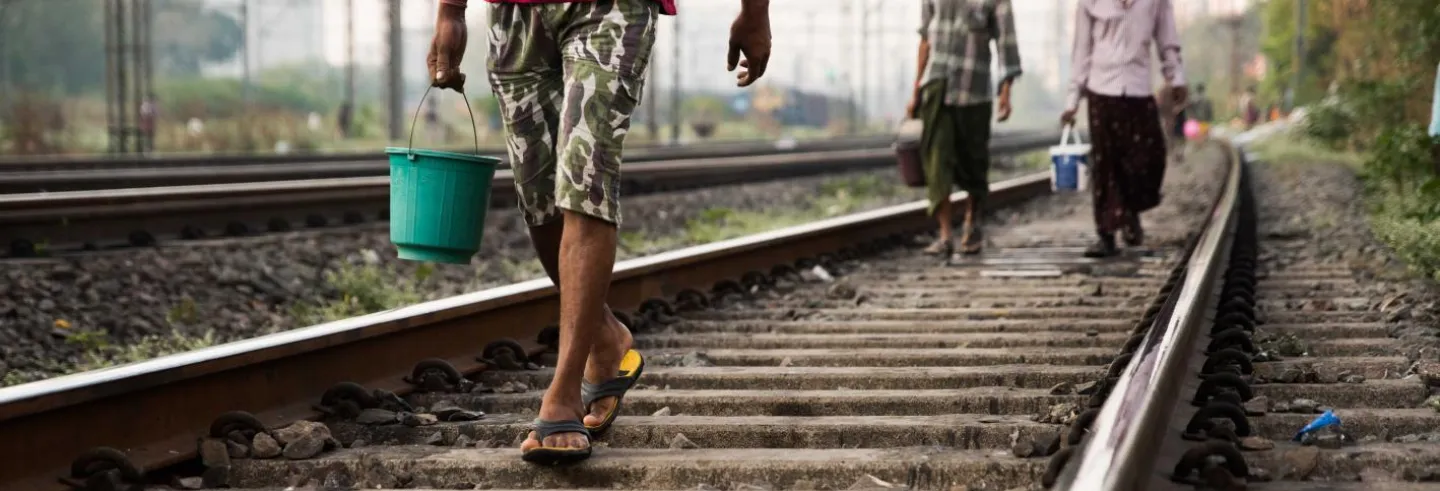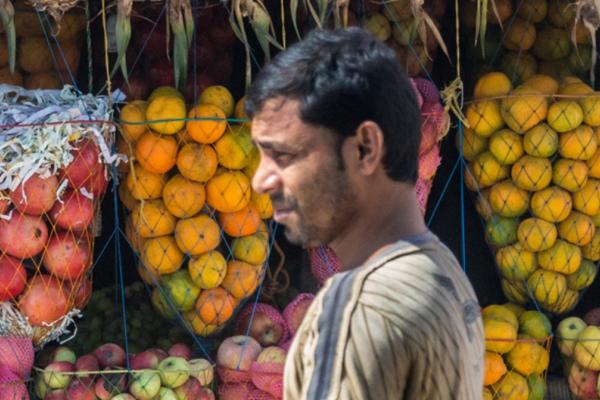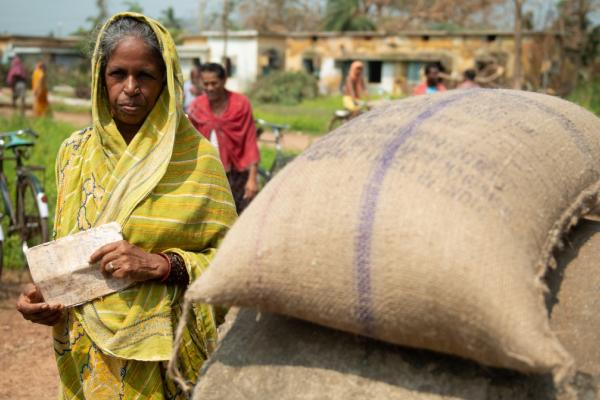Introduction
In August, 2014, just a few months after being elected, Prime Minister Narendra Modi stood at Delhi’s Red Fort and asked people to build toilets. On 2 October 2014, Mahatma Gandhi’s birthday, the government launched the Swachh Bharat Mission (SBM), a centrally sponsored scheme intended to clean up the country, and to make it “open defecation free” within five years
The goal was an important one, since open defecation is a major cause of India’s poor child health. Considering that the 2011 Census found that 70% of rural Indian households did not own a toilet or latrine, the goal was also an ambitious one.
On paper, the SBM was similar to prior sanitation programmes. The scheme’s budget emphasised latrine construction rather than information, education and communication activities. Like prior programmes, the SBM hired few new staff. The main difference was that the subsidy for individual household latrine construction was larger: Rs 12,000, compared to the Nirmal Bharat Abhiyan’s (NBA, 2012-2014) Rs 10,000, and the Total Sanitation Campaign’s (TSC, 2001-2011) Rs 4,500. Given the continuity between the SBM and prior rural sanitation programmes, and the fact that prior programmes largely failed to reduce open defecation, it seemed unlikely that the SBM would eliminate open defecation by October 2019. And yet, the SBM website reports that as of 30 January 2019, India is 98.82% open defecation free.
New survey data finds that the SBM website substantially overstates latrine use and that open defecation will almost certainly not be eliminated by 2 October 2019 (Gupta et al 2019). However, these new data, which were collected in Rajasthan, Madhya Pradesh, Bihar, and Uttar Pradesh between September and December 2018, do document large declines in open defecation between 2014 and 2018. Gupta et al (2019) estimate that in these four states, which constitute two-fifths of India’s rural population, open defecation declined from approximately 70% of rural people in 2014 to approximately 45% in 2018. This represents an annual rate of decline of about 6 percentage points per year, which is a rapid acceleration in the rate of decline compared to the 2 percentage points per year documented by the 2005 and 2015 National Family Health Surveys (NFHS).
[T]he new data find that nearly 60% of households that did not have a latrine in 2013-14 owned one by 2018, and that, among these, nearly three quarters received government support.
This acceleration in the decline in open defecation was achieved mainly through new toilet construction: the new data find that nearly 60% of households that did not have a latrine in 2013-14 owned one by 2018, and that, among these, nearly three quarters received government support. These results suggest that the SBM was, and in some states continues to be, a very active scheme.
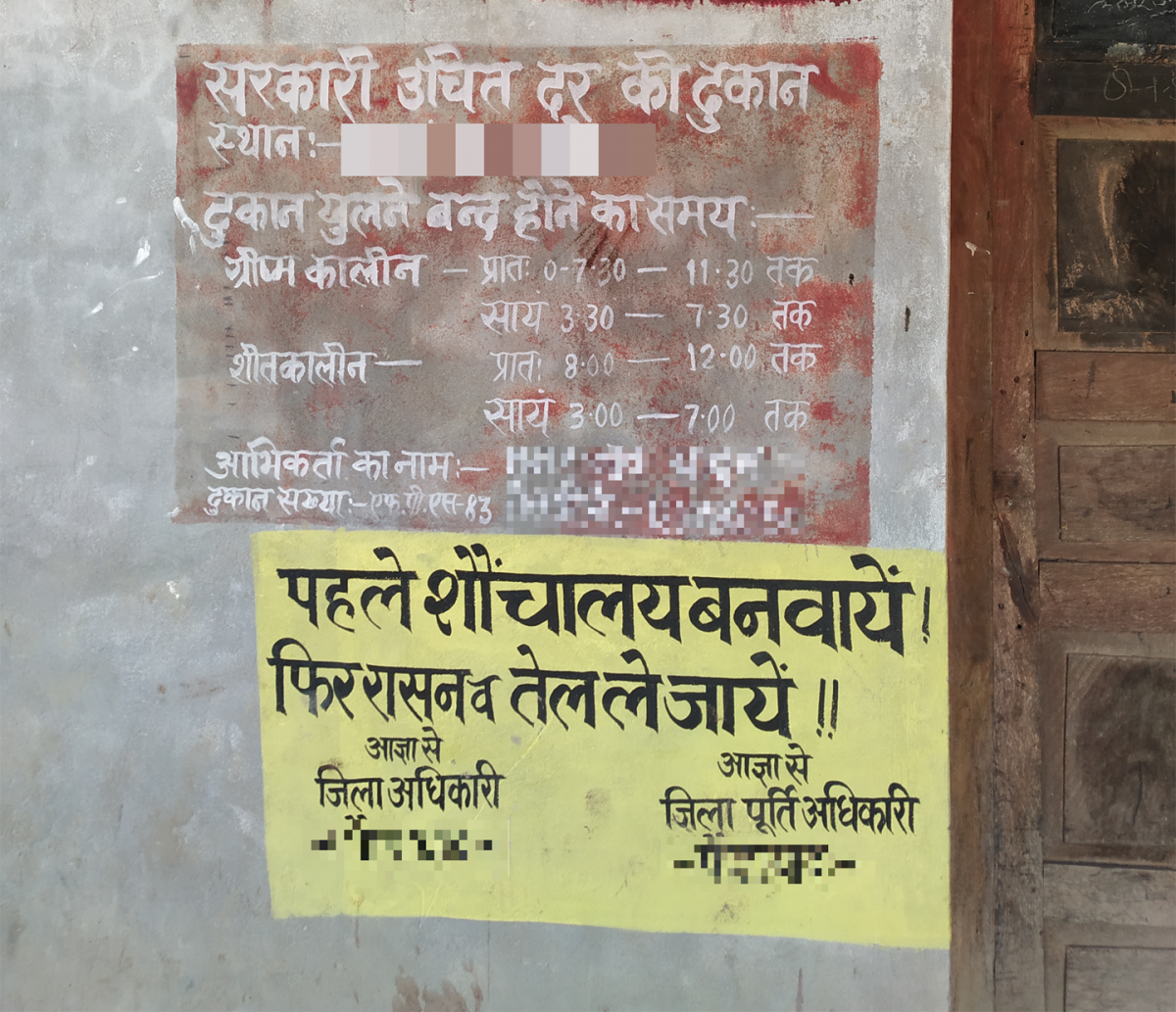
To put the SBM’s large-scale latrine construction into context, it is important to consider that many households in rural India do not want to build or use affordable latrines (Coffey & Spears 2017). Unlike in neighbouring Bangladesh, where inexpensive pit latrines are the norm, many households in rural India prefer expensive latrines with large pits or containment chambers (Coffey et al 2017). Large pits and containment chambers require less frequent emptying than affordable latrine pits, so they help their owners avoid hiring a manual scavenger. Such latrines are, however, substantially more expensive than the Rs 12,000 provided by the SBM. Indeed, the average cost of a latrine that a household constructed itself in the 2018 survey cost nearly three times that much, about Rs 34,000 (Gupta et al 2019).
Why does the government’s monitoring system claim that open defecation is nearly eliminated when the new data show that between 40 and 50% of people in four key states still defecate in the open?
In a context in which many households either wanted a very costly latrine or no latrine at all, how did the SBM accelerate the reduction in open defecation so dramatically? Why does the government’s monitoring system claim that open defecation is nearly eliminated when the new data show that between 40 and 50% of people in four key states still defecate in the open? What challenges might post-SBM sanitation programmes face?
In this article, we draw upon 156 qualitative interviews conducted with village and block-level officials in Rajasthan, Madhya Pradesh, Bihar, and Uttar Pradesh, as well as on new quantitative survey data, to answer these questions. We find that local officials used coercion to achieve latrine construction; that they were under substantial pressure from higher-ranking government officials; that they often organised contractors to construct latrines; that construction occurred quickly, at different times in different places; that the ODF declaration process did not ensure that villages were in fact open defecation free; and that although the SBM taught officials about twin pit latrines, the adoption of this safe, affordable technology by villagers was nevertheless limited.
These findings fill important gaps in today’s policy debates. Despite the fact that improving rural sanitation is critical to both improving health and spurring economic growth in India, and despite the nearly Rs 34,000 crore that were allocated to the SBM-Gramin between 2014 and 2018 (Accountability Initiative 2018), surprisingly little has been written about how the SBM operates in villages. Understanding SBM implementation is important both for public accountability and to inform future sanitation programmes.
Data
This article analyses 156 qualitative interviews with village and block-level officials in Rajasthan, Madhya Pradesh, Uttar Pradesh, and Bihar. These qualitative interviews, conducted by the two lead authors between 24 August and 30 December 2018, were part of a mixed methods panel study of changes in rural sanitation. The study revisited 120 villages that were previously surveyed between November 2013 and April 2014, prior to the launch of the SBM. Of the 1,558 households that were surveyed in 2018, 80% had also been surveyed in 2013-2014. Gupta et al (2019) and Coffey et al (2014) provide further details about the 2018 survey and the 2014 survey, respectively, including details on how villages and households were sampled.
Qualitative interview participants were recruited from the same villages where the household survey was conducted. Upon arriving in a village, the two lead authors sought residents’ help to identify panchayat functionaries who were involved in the SBM and who lived in the village. Participants in the quantitative household survey sometimes suggested additional officials to be interviewed.
Table 1 shows the number of villages visited and the number of officials interviewed in each state. We found that the local officials who implemented the SBM varied from state to state. In Rajasthan and Madhya Pradesh “nigrani samitis” or “vigilance committees” consisting of the sarpanch, secretary, village health and nutrition workers (Accredited Social Health Activists or ASHAs and Anganwadi Workers or AWWs), chowkidars, and others were formed to explain the subsidy programme, to convince people to build toilets, and to shame or stop people who defecated in the open. Therefore, people in these roles were more likely to be interviewed in Rajasthan and Madhya Pradesh. In Uttar Pradesh and Bihar, Swachhagrahis, or “village cleanliness volunteers,” were recruited to do the work that nigrani samiti members did in Rajasthan and Madhya Pradesh. In addition to persuading people to build toilets, local officials also facilitated subsidy payments and sometimes managed contractors who built toilets. In Rajasthan, Madhya Pradesh, and Uttar Pradesh these tasks were mostly done by pradhans and secretaries; in Bihar they were primarily done by ward members.
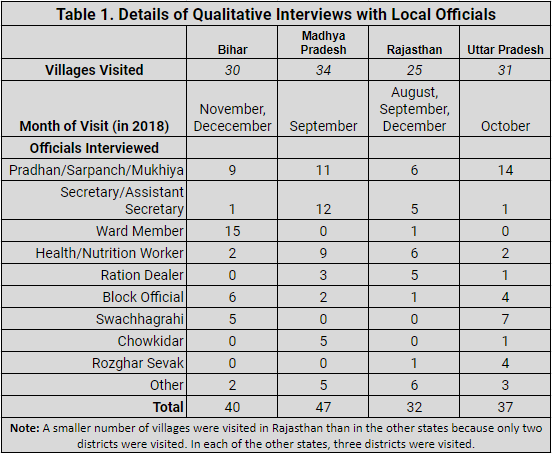
Findings
[We] find the nature and scale of coercion that occurred under the SBM important and ask whether it may undermine the sustainability of reductions in open defecation.
We analyse interviews with local officials and present qualitative evidence alongside statistics from the quantitative household survey described above. Our findings challenge the official narrative that the SBM is a “people’s movement” in which “communities” come together to end open defecation. Instead, we find the SBM to be a top-down programme in which villagers are often coerced into constructing latrines, with relatively little focus on latrine use, or on future faecal sludge management.
Our critique of the SBM should be understood in the context of our prior research on open defecation. Elsewhere, we have argued that the government has a legitimate and essential role to play in promoting sanitation and regulating unsafe defecation behaviour (Hathi et al 2017; Vyas et al 2016; Lawson & Spears 2016). Further, we have no doubt that many local, block, district, state, and central-level officials worked hard to achieve latrine construction. As we mentioned above, the SBM’s latrine construction reduced rural open defecation substantially (from about 70% to about 45%) in the states we study (Gupta et al 2019). Because open defecation poses a threat to child health, this reduction in open defecation should be celebrated. Nevertheless, we find the nature and scale of coercion that occurred under the SBM important and ask whether it may undermine the sustainability of reductions in open defecation. We further note that the SBM has not addressed villagers’ concerns about latrine pits and pit-emptying, and has created latrine pits that cannot be emptied safely. We hope that the findings below will inform conversations about the SBM and the next rural sanitation policy.
“Unko darayenge – dhamkayenge”1: Coercing toilet construction
The media has reported several cases in which people were harassed for defecating in the open or were coerced into constructing latrines (Indian Express 2017; Singhal 2017). In order to investigate how common such tactics have been, the quantitative survey asked whether anyone in the respondent’s household was physically stopped from defecating in the open; whether anyone in the household was threatened with loss of government benefits (such as food rations); and whether anyone in the household was threatened with a fine. Respondents were also asked whether they were aware of each of these tactics happening in their village.
Of the respondents, 12% said that someone in their household experienced at least one of these forms of coercion, and 56% said that they were aware of at least one of these three activities happening in their village. Although coercive tactics were used in all four states, they were more common in Rajasthan and Madhya Pradesh, where 68% and 78% of respondents, respectively, had heard of at least one of these forms of coercion in their village. An aspect of the SBM’s use of coercion that causes a great deal of concern is that Dalit and Adivasi households were significantly more likely to experience it than households from other backgrounds (Gupta et al 2019).
The qualitative interviews provide a more detailed picture of what coercive tactics looked like in practice, and explain how officials perceived their own actions. In many villages, nigrani samiti members, Swachhagrahis, children carrying drums or whistles, or visiting teams from outside the village used “morning follow up” to convince people to build and/or use latrines. Morning follow up involved stopping people who were defecating in the open and making them feel ashamed of their actions. Nigrani samiti members and Swachhagrahis said they emptied people’s lotas;2 clicked their photographs and threatened to post the photographs publicly; blew whistles at people who were going to defecate in the open; and put garlands around people’s necks.
A Swachhagrahi in Uttar Pradesh explained: “There is a flower, the periwinkle. We greet people and put that around their necks early in the morning…We don’t fight with them, we just insult them a bit. We make them feel a bit ashamed of themselves, we make them feel a bit disgusted with themselves.” A WhatsApp video shared with one of the authors showed some local officials going further than this: young nigrani samiti members in crisp, collared shirts stopped lungi-clad men who were going to defecate in the fields and forced them to kaan pakarna (pulling one’s ears as a way of apologising) and to uthak-baithak karna (to do sit-ups asa way of showing deference to authority).
Local officials casually reported that they threatened to withhold Public Distribution System...food grains, kerosene oil, and other goods if people did not construct latrines.
Morning follow up activities were typically done over a period of weeks or days in each village. Therefore, although these activities were likely to have humiliated people, they may not have provided as strong a motivation to construct latrines as threats to withhold government benefits, which were made in all of the states the study visited. Local officials casually reported that they threatened to withhold Public Distribution System (PDS) food grains, kerosene oil, and other goods if people did not construct latrines. Other public benefits that local officials threatened to withhold included electricity, pensions, housing subsidies, and health benefits, such as the Bhamashah Swasthya Bima Yojana in Rajasthan. In isolated incidents in Rajasthan, teachers even threatened to remove children’s names from enrolment lists in public schools if their parents did not build toilets.
A ration dealer in Rajasthan explained that the government “ran a scheme in which we [ration dealers] were supposed to stop people’s rations until they had a [niralo ghar (a beautiful and clean home)] stamp [in their ration card]".
In Uttar Pradesh and Bihar, local officials often explained that threats to fine people and withhold public benefits were simply threats, and that they were not facing strong pressure from block or district officials to actually carry them out. A pradhan in Uttar Pradesh said: “If a person doesn’t use the toilet after he has constructed one, then he could be fined between Rs 500 and Rs 5000. But until now, we haven’t received instructions to do that.”
In Rajasthan and Madhya Pradesh, in contrast, it was more common for local officials to put these forms of coercion into practice. A ration dealer in Rajasthan explained that the government “ran a scheme in which we [ration dealers] were supposed to stop people’s rations until they had a [niralo ghar (a beautiful and clean home)] stamp [in their ration card]. The SDM [sub-divisional magistrate] asked us to support this programme, saying, ‘please don’t give rations [to people who don’t have a stamp] so that they will participate [in the SBM].’ So, we were strict for two or three months and then everyone constructed their latrines.”
A village secretary in Madhya Pradesh told a similar story: “The tehsildar came [to our village] once. He told the patwari that he should cancel the Kisan Credit Cards of people who did not build toilets. If [people who do not build toilets] need some document, do not give it to them. Even if they need the map of their land, if they need a copy of a kasra or a khatauni,3 or caste or domicile certificates. Whatever documents are provided from [the revenue department], stop giving them. Create pressure [on people who don’t build toilets] in all these different ways.” These quotations illustrate that higher-ranking government officials coached local officials about how to compel villagers to construct toilets. They contradict official claims that the SBM operated through the kind of gentle, paternalistic “nudges” advocated by psychologists and behavioural economists.
[T]he pradhan in Uttar Pradesh...believed it would be necessary to punish people who did not use latrines. He said: “it should be such a punishment that people remember it, it should hurt. It is like when you hit people lightly, then they will walk away laughing, but if you hit them hard, then it will sting for a while.”
Local officials were, for the most part, unapologetic about coercion. Where they did express hesitation to withdraw government benefits, it was either because they were concerned that their neighbours might become angry with them, or, in the case of ration dealers, because it might raise questions among higher-ranking officials within the PDS. There was little recognition that withdrawing government benefits might cause genuine hardship for people who rely on them, or that some of what was being threatened, such as food and education, are legally recognised rights. Rather, the pradhan in Uttar Pradesh who is quoted above believed it would be necessary to punish people who did not use latrines. He said: “it should be such a punishment that people remember it, it should hurt. It is like when you hit people lightly, then they will walk away laughing, but if you hit them hard, then it will sting for a while.”
The quantitative survey documented that Dalits and Adivasis were more likely to face coercion than households from other backgrounds. Interviews with local officials also showed that caste played a role in who was coerced. A sarpanch in Madhya Pradesh explained that in his village “the Harijans did not want to build latrines…we had to bring in the police in a few places. [We said], ‘if you people will not build [latrines], if you won’t do that, then we will lock you up.’ We had to threaten them. And in ward number 20 and ward number 9, where the Harijans live, we actually had to have them picked up [by the police]…then they became ready to build [latrines].”
“Naukri khatre mein hai”:4 The pressures that local SBM implementers face
In contrast to the officials who implemented the NBA and the TSC, district and block officials who implemented the SBM frequently visited villages and had regular contact with local officials. The husband of a sarpanch in Madhya Pradesh explained that the interest that district-level officials took in the SBM was a refreshing change: “the government officials have come out of their offices and have started to see what all is going on in the villages. Let me tell you, they’ve come very early in the morning. People like the collector and the deputy collector. Those poor guys have come in their [exercise clothes] at six in the morning.”
Local officials were given unreasonably high targets for the number of toilets to construct in short periods of time.
Perhaps as a result of this regular contact with higher-ranking government officials, most local implementers were knowledgeable the scheme and about rural latrine technology. In particular, most knew that the government promotes twin pits because such pits can be emptied by hand without expensive equipment or employing manual scavengers. A rozgar sevak in Uttar Pradesh explained: “One pit should be used at a time. When the first pit fills up some time in the future, that chamber can be locked, and then the other pit can be used. After a year, the faeces in the [first] pit will have turned to fertilizer which we can use to fertilize the fields.” The fact that many local officials now understand the benefits of the twin pit design is a major achievement of the SBM. As we will discuss later in the article, however, this knowledge unfortunately did not translate into widespread adoption of twin pit latrines.
Most local officials were also familiar with key messages of Community Led Total Sanitation (CLTS) – that open defecation spreads diseases; that disgust can be used to motivate latrine construction and use; and that in the absence of latrines people who defecate in the open should cover their feces. Despite familiarity with these messages, however, local officials often had little time to pass them on to households.
“I am a contract worker…they tell us that if we don’t get 700 toilets built…then we will be fired…the threat is there, we have been given notices…there is so much work that do you know what I do? I get my wife to do the online data entry because I just can’t manage it all.”
Local officials were given unreasonably high targets for the number of toilets to construct in short periods of time. As an SBM block coordinator in Madhya Pradesh explained: “We have to motivate people but we also have construction targets. You see, we have to make 18,000 toilets before the 2nd of October [of 2018]. So, we have put motivation aside and focus on the construction target.” He went on to say that he was concerned about losing his job if he did not meet targets: “I am a contract worker…they tell us that if we don’t get 700 toilets built…then we will be fired…the threat is there, we have been given notices…there is so much work that do you know what I do? I get my wife to do the online data entry because I just can’t manage it all.”
This pressure extended up and down the bureaucracy and is likely to have been an important reason why coercion was so common. The husband of a sarpanch in Madhya Pradesh explained that in his district, “The divisional [CEO] madame got the ration stopped. She did this because people were not getting latrines built in their houses…she did not do anything wrong…she may otherwise not have done this, had she not had pressure of her bosses. She was pressured to get latrines constructed in her jurisdiction.”
The fact that local officials who protested their roles in the SBM were threatened with removal or wage loss conflicts with official statements claiming that nigrani samitis represented “affirmative community action.”
A village secretary, also in Madhya Pradesh, reported that “the district [CEO] said that all of the secretaries’ jobs are in danger. He also told the sarpanches that they could be removed if they did not build toilets.” Similarly, the AWWs and ASHAs in Madhya Pradesh and Rajasthan were required to participate in nigrani samitis, even when they were reluctant to do so. An AWW in Madhya Pradesh said: “We had to wake up at five in the morning and [go out to stop people who defecated in the open] whether or not we had our tea, and whether or not we had to carry our small children with us. We had to do this. It was necessary because we were being forced to from above.” Village health workers often spoke of the unfair burden that this extra, unpaid work placed on them. Those who protested about the extra work sometimes found their salaries halted until they complied. The fact that local officials who protested their roles in the SBM were threatened with removal or wage loss conflicts with official statements claiming that nigrani samitis represented “affirmative community action.”
“Agar acchi banana hai, to khud banaenge”:5 Latrine subsidies and contractor-constructed latrines
The quantitative survey found that nearly 40 % of households in the four states we studied received government support to construct a latrine between 2014 and 2018. Within states, the fraction that received government support varied from more than half of households in Madhya Pradesh to about one-in-five in Bihar.
In all states, there was substantial acceleration in government latrine construction compared to prior government sanitation programmes: in the 2014 survey, less than 10% of households reported having received government support for a latrine (Gupta et al 2019).
One important reason why villagers resisted building latrines is because the cost of building the type of latrine that they wanted far exceeds the amount of the subsidy
We have shown that local officials were pressured to coerce villagers to either build or accept a latrine. The “need” for coercion in the context of a programme in which villagers received a subsidy for latrine construction may seem puzzling to outside observers. If the government pays for latrines to be constructed, why would people not build them willingly? One important reason why villagers resisted building latrines is because the cost of building the type of latrine that they wanted far exceeds the amount of the subsidy: the average cost of a privately built latrine in the 2018 survey was about Rs 34,000, compared to the subsidy amount of Rs 12,000 (Gupta et al 2019).
It was common for local officials to hire contractors to construct latrines where they believed that villagers could not or would not construct them on their own. A block coordinator in Bihar explained: “The Swachata Abhiyan is a scheme in which the beneficiary is supposed to build his own toilet. [Then] he is supposed to get 12,000 rupees in his account. But not everyone has 12,000 rupees [to build a toilet]. If he doesn’t even have enough to eat, where will he get enough to build a toilet?...[This is why] some ward members and the BDC [block development committee member] have gotten some money together, and taken some loans, and gotten some of the toilets built.”
In Bihar, Madhya Pradesh, and Uttar Pradesh, about half of latrines supported by the SBM were contractor-constructed. The prevalence of contractor-constructed latrines is important because contractor-constructed latrines are typically of lower quality. A chowkidar in Madhya Pradesh explained: “If we want to build [a good latrine], then we will build it ourselves. If we just want to ‘check the box’ [indicating that we have a toilet] then we get a contractor to do it.”
Data from the quantitative survey find that contractor-constructed latrines are less likely to be used: in households with contractor-constructed latrines, open defecation was about 10 percentage points higher than in households with self-constructed latrines (Gupta et al 2019). We note that contractor-constructed latrines under SBM are, however, of higher quality and more likely to be in use than the contractor-constructed latrines under the TSC and the NBA.
Among the four states we studied, Rajasthan had the lowest proportion of contractor-constructed latrines. This may at first appear to be a strength of Rajasthan’s state-level SBM implementation. However, our fieldwork suggests that compelling poor households to construct their own latrines was burdensome for them. Most were unfamiliar or uncomfortable with affordable latrines, so they spent substantial sums on expensive latrines in order to avoid losing government benefits. Households in Rajasthan spent Rs 51,000, on average, per latrine. In a context in which local officials were either unable or unwilling to educate people about how to construct their own low-cost latrines, contractor-constructed latrines may have been a more compassionate alternative.
Different states used different payment structures to disburse latrine subsidies. This variation may provide lessons for future sanitation programmes. In Uttar Pradesh, subsidies were transferred to village level-accounts held jointly by the secretary and the pradhan, who could write cheques or make direct transfers to beneficiaries.
Although in principle, secretaries and pradhans in Uttar Pradesh were supposed to distribute funds to households that built a latrine if these households had been identified as lacking one by a 2012 baseline survey, in practice, they had wide discretion over who received a subsidy and when. In Bihar, Rajasthan, and Madhya Pradesh, in contrast, subsidies were transferred to beneficiaries’ accounts by the block.
Another dimension of subsidy payments that varied by place was the use of instalments. Instalments may have made it easier for credit-constrained households to construct their own latrines. However, this would have increased the administrative burden of the programme.
In Bihar, the government delayed latrine subsidies until the entire ward, or a large fraction of the households in it, constructed latrines. This rule, which was no longer in effect at the time of the survey, may have been intended to encourage neighbours to pressure one another to build latrines. Using the phrase “to become ODF” as a synonym for receiving subsidy payments, a village mukhiya in Bihar explained: “Before the system was that to become ODF, everyone had to build a toilet. Then, it was that 80% had to build, then 70% had to build, and then 50% had to build…now it doesn’t matter if the ward is ODF or not, if someone makes a toilet and his name is on the list, then he will get a payment.” Several local officials expressed the view that this rule importantly slowed latrine construction.
Kagaz hi har jagah chalta hai:6 How the SBM monitoring numbers are produced
In rural India, latrine ownership does not necessarily imply latrine use. For example, Yogananth & Bhatnagar (2018), who study rural Tamil Nadu, and Barnard et al (2013), who study rural Orissa, found that more than half of people who own latrines nevertheless defecate in the open. In 2014, we found that that about a quarter of the people in households that owned latrines in Rajasthan, Uttar Pradesh, Bihar, and Madhya Pradesh defecated in the open (Coffey et al 2014).
In Rajasthan and Madhya Pradesh, states that had been declared ODF by the time of the survey, we found rural open defecation rates of about 50% and about 25%, respectively. The vast majority of villages in Uttar Pradesh and Bihar have also been declared ODF; the quantitative survey found open defecation rates of approximately 40% and 60%, respectively, in these states
It is therefore appropriate that the SBM guidelines would emphasise changing open defecation behaviour over latrine ownership (MoDWS 2017). Our interviews suggest that the SBM trainings did stress ending open defecation: when asked the SBM’s purpose, many local officials said that the programme’s purpose was to make villages open defecation free. However, they quickly clarified that the real pressure that they faced was to meet construction targets.Unfortunately, despite the emphasis that the programme put on open defecation behaviour on paper and in training, the ground reality is that, in many places, the SBM is primarily a massive, hurried, latrine construction scheme.
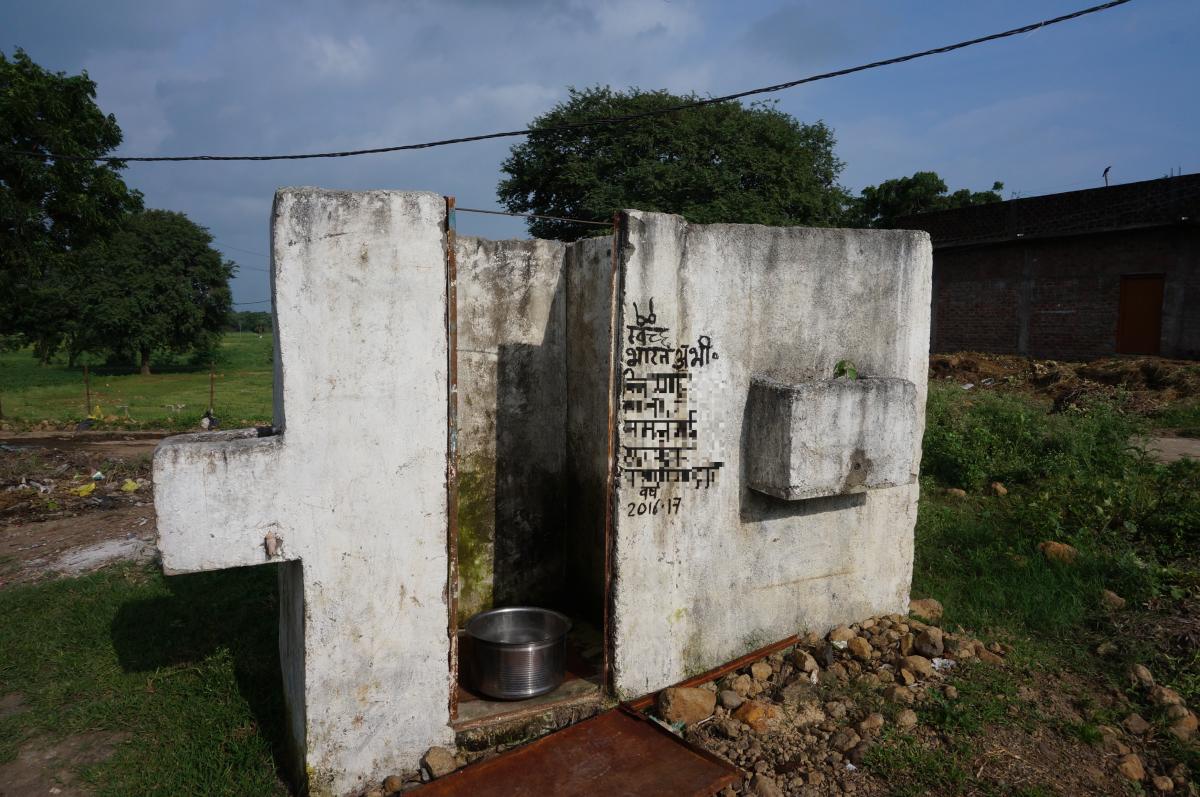
Not only is the government in a hurry to construct latrines, it is also in a hurry to “declare” villages, blocks, districts, and eventually, states, and the entire country ODF. The number of villages that have been declared ODF are updated in real time on the SBM’s website. At the time we write this article, in the last days of January 2019, the SBM website reports that about 5,48,450 villages have been declared ODF. Unfortunately, the 2018 household survey found that many places that had been declared ODF still had significant levels of open defecation.
How do villages, and eventually blocks, districts, and states get declared ODF despite high levels of open defecation? One reason is that ODF status is often declared where latrine coverage is, in fact, incomplete: about 30% of households in the four states we studied did not own a latrine.
In Rajasthan and Madhya Pradesh, states that had been declared ODF by the time of the survey, we found rural open defecation rates of about 50% and about 25%, respectively. The vast majority of villages in Uttar Pradesh and Bihar have also been declared ODF; the quantitative survey found open defecation rates of approximately 40% and 60%, respectively, in these states (Gupta et al 2019).
How do villages, and eventually blocks, districts, and states get declared ODF despite high levels of open defecation? One reason is that ODF status is often declared where latrine coverage is, in fact, incomplete: about 30% of households in the four states we studied did not own a latrine. Another reason is that many people who own a latrine still defecate in the open. In fact, latrine use among latrine owners has not changed since 2014: one in four people who own a latrine in the 2018 survey do not use it (Gupta et al 2019).
Many local officials reported that they were told to declare their villages ODF when households that were eligible to receive SBM subsidies had built latrines, rather than when everyone was using a latrine. In many places, a household was eligible to receive a subsidy if it was listed in a 2012 baseline survey as lacking a latrine. 7 Considering that errors are common, and that new households formed between 2012 and 2018, it is not surprising that many households that did not own a latrine in 2018 were excluded from the list. Some explained that it was not even necessary to achieve 100% latrine coverage among eligible households to declare a village ODF. They had been instructed to file paperwork for ODF status when about 70 or 80% of households from the 2012 baseline survey had constructed a latrine.
A Swacchagarhi in Uttar Pradesh explained: “If someone wants to go out [to defecate in the open], he won’t listen to us...some of us are in the habit of defecating in the open. So, neither you nor I will be able to stop [such people]. There are many people in our village like this.”
Local officials rarely considered latrine use to be part of the ODF declaration process. One local official in Uttar Pradesh explained: “Suppose that we have a target of 400 [latrines] and suppose we get 390 built, then our village is already ODF…even if 70% are not using them. It is what is on paper that matters.” Indeed, some officials doubted that it would even be possible for the SBM to change latrine use. A Swacchagarhi in Uttar Pradesh explained: “If someone wants to go out [to defecate in the open], he won’t listen to us...some of us are in the habit of defecating in the open. So, neither you nor I will be able to stop [such people]. There are many people in our village like this.”8
Samasya to aage dikh rahe hai:9 Planning for the pits
Prior research has documented the link between rural India’s high rates of open defecation and its history of untouchability and manual scavenging (Coffey et al 2017; Coffey & Spears 2017). In short, rural Indians are less likely to use affordable latrines than people in other countries because rural India’s history of untouchability and manual scavenging attaches special aversive meaning to emptying latrine pits. People from non-manual scavenging castes refuse to empty their own latrine pits. Because of the degradation and social exclusion associated with latrine-pit emptying, it is difficult to hire someone to do this work.
In principle, twin pit latrines allow safe fecal sludge management: when the first pit fills up, the owner can start using the second pit. This allows the fecal sludge in the first pit to decompose for six months to a year. Decomposed feces are safer to handle than fresh sludge. Handling decomposed feces is not considered manual scavenging by the 2013 Anti-Manual Scavenging Act.
In some places, government officials even performed public pit emptying demonstrations to challenge the stigma attached to handling faecal matter.
As we discussed above, our qualitative interviews found that the SBM taught local officials how twin pit latrines work and what their benefits are. The SBM also produced an ad in which Bollywood actors Bhumi Pednekar and Akshay Kumar challenged social taboos about latrines and taught viewers that decomposed sludge can be used as fertilizer. In some places, government officials even performed public pit emptying demonstrations to challenge the stigma attached to handling faecal matter. An SBM block coordinator in Madhya Pradesh explained the benefits of the twin pit model and said that such a demonstration had taken place in his block: “In villages, if you make a septic tank [containment chamber], how will you empty it? There will be problems in the future. With a two pit [latrine], people can empty it themselves…when our district collector can empty a pit in [a nearby panchayat], then they can do it too.”
Efforts to teach people about twin pits and reduce the stigma around pit-emptying are important and admirable. However, results from the household survey suggest that these efforts were neither sufficiently widespread nor sufficiently prominent. Only 25% of latrines in Rajasthan, Madhya Pradesh, Uttar Pradesh, and Bihar were twin pit latrines. Instead, most latrines have either single pits (40%) or containment chambers (31%). When asked how long it would take a 3 by 3 by 3 foot latrine pit to fill up if it were used every day by a family of five, a quarter said that they did not know, and another 40% of households underestimated the length of time such a pit would last. When asked why the government recommends twin pit latrines, less than a third of households gave a correct answer. About a third said that they did not know, and about 45% thought that twin pits were recommended in order to increase the overall size of the pit.
Contrary to the SBM’s claims that India will very soon be open defecation free, open defecation in rural India continues to be widespread.
The qualitative interviews suggest that more information, education, and communication are needed to persuade people to adopt twin pits. A sarpanch’s husband in Madhya Pradesh emphasised that people in his village do not want twin pit latrines that the government recommends: “What is going on is that people do not use kaccha toilets. And so it was a problem that we had to build kaccha toilets for people. By “kaccha,” I mean the soak pit one. Like the one that is in the Akshay Kumar ad that keeps playing on TV…people do not pay attention to this. They say that they only want a pacca toilet.”
Conclusions
Contrary to the SBM’s claims that India will very soon be open defecation free, open defecation in rural India continues to be widespread. Because of the threat open defecation poses to child health, rural sanitation continues to deserve substantial investment of both financial and human resources. The next rural sanitation programme should abandon coercive tactics, focus on latrine use, and encourage more people to use twin pits. The health of children, the dignity of the elderly and disabled, and the struggle for social equality of people from manual scavenging castes depend on it.


